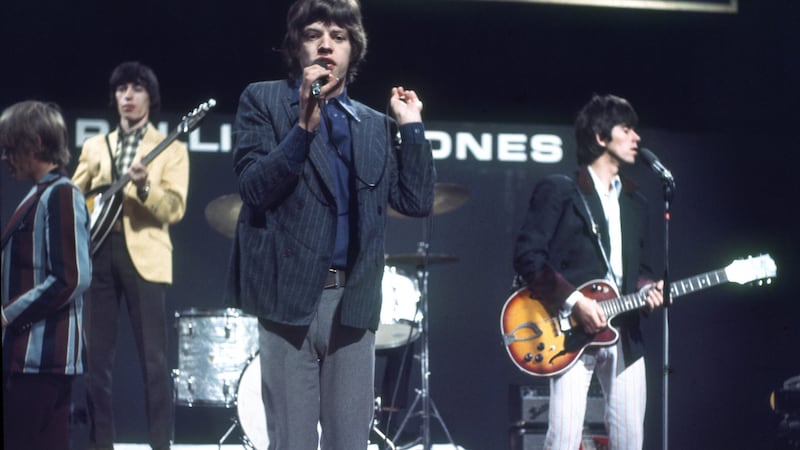They don’t make them like Bill Graham any more. For many years, the promoter would take a starring role in the annual New Year’s Eve shenanigans in San Francisco.
Dressed as Father Time, he’d arrive into the venue on a vessel decked out as the Golden Gate bridge, a magic mushroom or a giant mirrorball. In 1989, he sat on a giant egg, which hatched at midnight to reveal his son Alex.
It’s impossible to think of any of today’s house-trained Live Nation or AEG promoters doing something similar. Such chutzpah and craziness has been eradicated from the business.

Bill Graham and the Rock & Roll Revolution, currently running at the Contemporary Jewish Museum in San Francisco, is an exhibition telling the tale of the Jewish kid born Wolfgang Grajanca in Berlin, who escaped from the Nazis and ended up in the United States. Graham may have fostered a desire to be an actor, but ended up inventing the modern live music business instead.
After growing up in New York, it was San Francisco that was the making of him. He moved there in the early 1960s and became manager of the San Francisco Mime Troupe theatre group. A benefit concert for the group in 1965 opened Graham’s eyes to the possibilities of live music and he never looked back.
The roll-call of acts who played shows by Graham is a starry one. He was among the first to promote shows by the Grateful Dead, Jefferson Airplane, Jimi Hendrix and Janis Joplin. He promoted tours by Bob Dylan and the Rolling Stones and was the man behind The Last Waltz with The Band. He was even onstage at Woodstock, playing cowbell with Santana, though he was scathing about the festival organisers and their inability to keep control of the event.
An eye on the chaos
Remember that Graham liked control. He may have been the one putting on these extraordinary countercultural happenings, but he was very much the straight one who didn't do drugs. The exhibition features detailed memos he wrote to staff after shows, pointing out broken chairs and problems with doors. While the shows themselves may have been wild, Graham was always detached, keeping an eye on the chaos.
There’s an Irish angle to Graham’s story, involving legendary Kerry-born venue owner, builder, band manager and miner Bill Fuller. Graham needed a new space for gigs and got a tip about the Carousel ballroom. He found out that it was one of 900 venues owned by Fuller, and decided to pay him a visit in Ireland, where he was building a hotel.
In a great passage in Graham’s autobiography Bill Graham Presents: My Life Inside Rock and Roll, he writes about arriving into Shannon on a plane full of nuns. He did the deal with Fuller in the airport restaurant over a breakfast of steak, eggs, potatoes and bourbon and the Carousel was renamed the Filmore West.
In later years, he became the go-to guy for charity concerts and tours. He promoted Live Aid, Amnesty International’s Conspiracy of Hope tour, the first Bridge School Benefit in 1986, the In Concert Against Aids in 1989 and For A Free South Africa with Nelson Mandela in 1990.
He was killed in a helicopter crash in October 1991 and, a week later, an estimated half-a-million people showed up for the Laughter, Love & Music tribute concert featuring the Dead, Santana, Crosby Stills & Nash, Joan Baez, Jackson Browne and many more.
It was a fitting occasion. As the exhibition notes, “it was the first time so many people had turned out for a man who played no instrument, could not really sing and had never written a song. At long last, the crowd had really come for Bill.”

